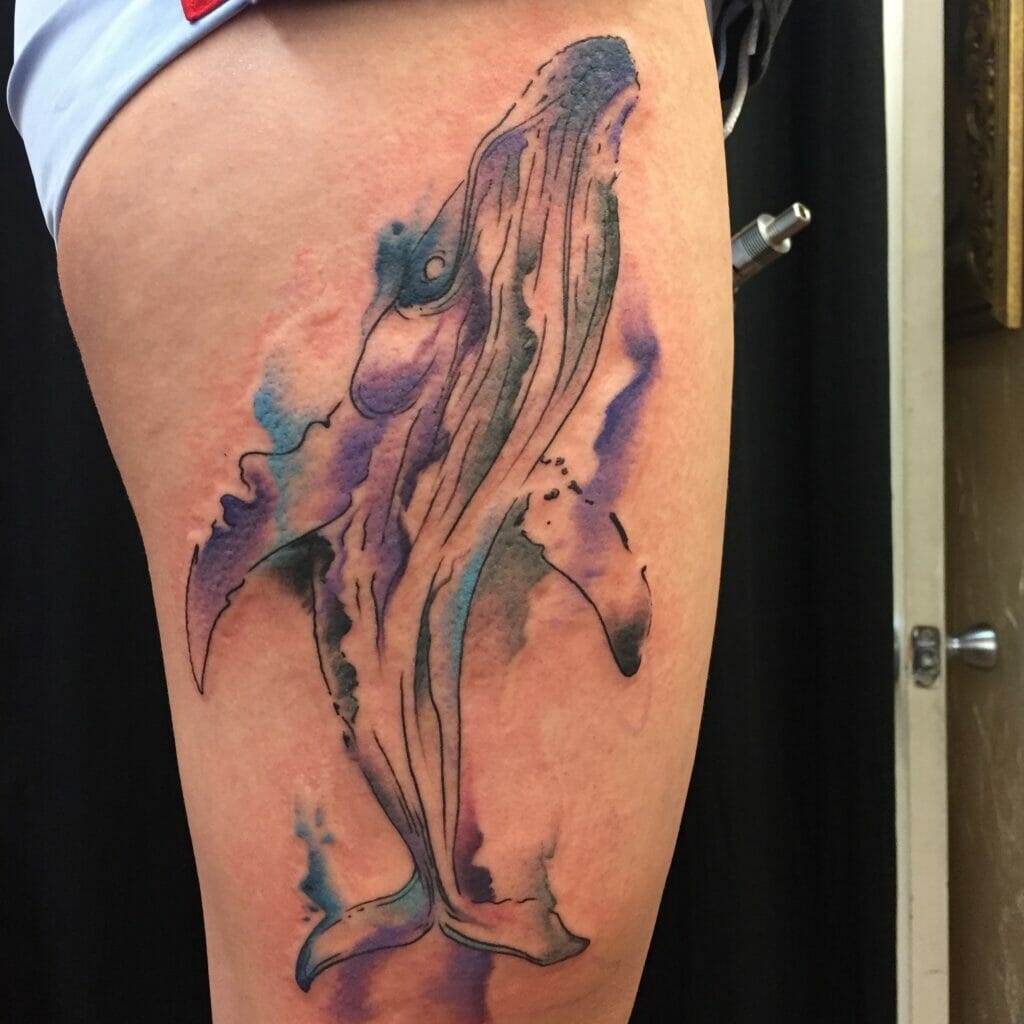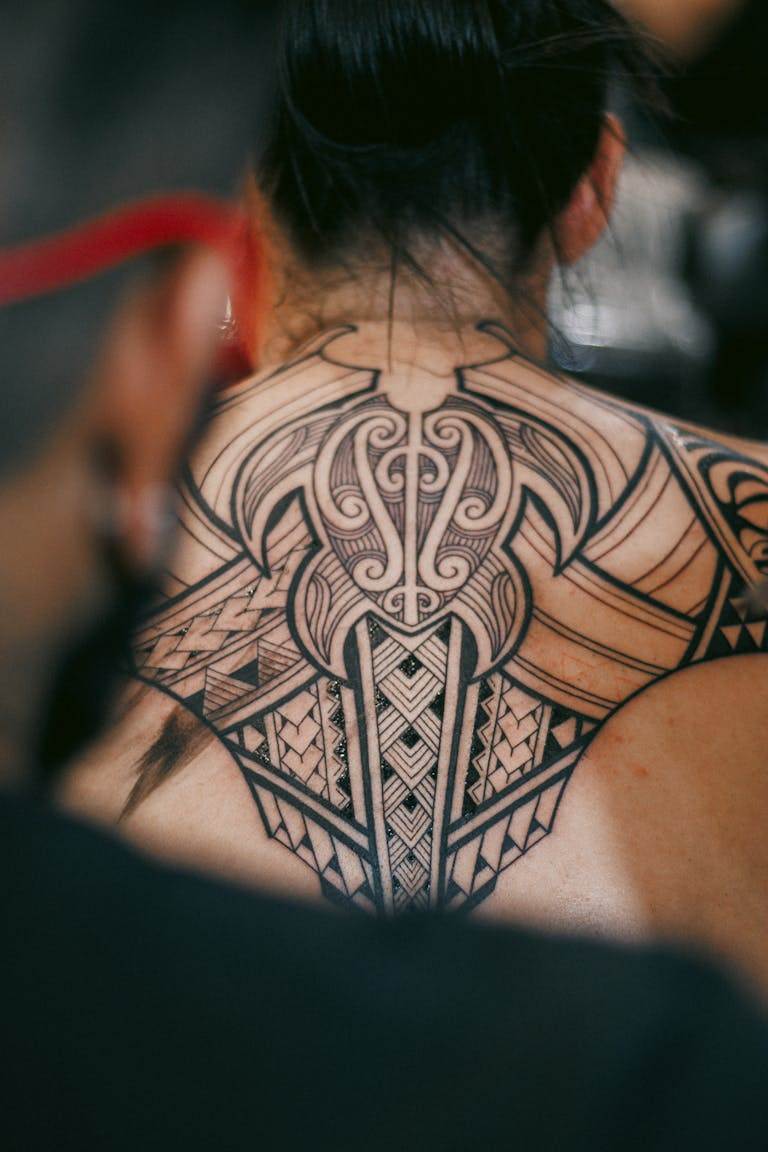
In recent years, there has been a surge in the popularity of textured tattoos. These unique and eye-catching designs have captivated the tattoo community and have become a sought-after choice for many individuals looking to express themselves through body art. Textured tattoos add depth and dimension to traditional tattoo designs, creating a visually stunning effect that sets them apart from other styles. But what exactly are textured tattoos?
Textured tattoos are designs that incorporate various techniques to create a tactile feel on the skin. These techniques can include dotwork, geometric shapes, blackwork, watercolor, and realism. By using these different methods, tattoo artists are able to add texture and depth to their designs, making them appear more three-dimensional and lifelike.
Understanding the Art of Textured Tattoos
Texture is an essential element in tattoo design as it adds visual interest and depth to the artwork. In traditional tattoos, texture is often created through shading and line work. However, with textured tattoos, artists take it a step further by incorporating different techniques that create a physical texture on the skin.
By using techniques such as dotwork, geometric shapes, blackwork, watercolor, and realism, tattoo artists are able to create texture in their designs. Dotwork involves using tiny dots to create shading and depth in the tattoo. Geometric shapes can be used to create a textured effect by layering different shapes and patterns. Blackwork uses solid black ink to create bold and graphic designs that have a textured appearance. Watercolor tattoos use vibrant colors and fluid brushstrokes to create a painterly effect that adds texture to the design. Realism involves creating highly detailed and lifelike images that appear three-dimensional on the skin.
The Different Types of Textured Tattoos
There are several different styles of textured tattoos, each with its own unique way of creating texture in the design. These styles include dotwork, geometric tattoos, blackwork, watercolor tattoos, and realism.
Dotwork is a technique that involves using tiny dots to create shading and depth in the tattoo. By varying the size and density of the dots, tattoo artists can create a textured effect that adds dimension to the design. Dotwork tattoos can range from simple and minimalistic designs to intricate and highly detailed pieces.
Geometric tattoos use geometric shapes such as triangles, squares, and circles to create a textured effect. By layering different shapes and patterns, tattoo artists can create a visually interesting design that appears three-dimensional on the skin. Geometric tattoos can be bold and graphic or more intricate and delicate, depending on the artist’s style.
Blackwork is a style of tattooing that uses solid black ink to create bold and graphic designs. By using solid black ink, tattoo artists can create a textured effect that adds depth and dimension to the design. Blackwork tattoos can range from simple and minimalistic designs to highly detailed and intricate pieces.
Watercolor tattoos use vibrant colors and fluid brushstrokes to create a painterly effect that adds texture to the design. By blending different colors together and using fluid brushstrokes, tattoo artists can create a textured effect that mimics the look of a watercolor painting. Watercolor tattoos can be bright and vibrant or more muted and subtle, depending on the artist’s style.
Realism involves creating highly detailed and lifelike images that appear three-dimensional on the skin. By using shading, highlights, and fine details, tattoo artists can create a textured effect that makes the design look like a photograph or a painting. Realism tattoos can range from portraits of loved ones to intricate nature scenes.
Dotwork: The Foundation of Textured Tattoos
Dotwork is one of the foundational techniques used in creating textured tattoos. This technique involves using tiny dots to create shading and depth in the tattoo. By varying the size and density of the dots, tattoo artists can create a textured effect that adds dimension to the design.
Dotwork tattoos can range from simple and minimalistic designs to intricate and highly detailed pieces. The use of dots allows for a high level of precision and control, resulting in stunningly detailed and visually striking tattoos.
Dotwork tattoos can be created using a variety of tools, including tattoo machines, needles, or even hand-poked techniques. The choice of tool depends on the artist’s preference and the desired effect. Some artists prefer to use a single needle for dotwork tattoos, while others may use multiple needles to create different textures and effects.
Examples of dotwork tattoos can include mandalas, floral designs, animals, or even portraits. The use of dots allows for intricate patterns and details to be created, resulting in visually stunning and unique designs.
Geometric Tattoos: A Popular Choice for Textured Designs

Geometric tattoos are another popular choice for creating textured designs. These tattoos use geometric shapes such as triangles, squares, and circles to create a textured effect on the skin.
By layering different shapes and patterns, tattoo artists can create a visually interesting design that appears three-dimensional on the skin. The use of geometric shapes allows for precise lines and angles, resulting in clean and bold designs.
Geometric tattoos can be bold and graphic or more intricate and delicate, depending on the artist’s style. Some artists may choose to incorporate other elements such as flowers, animals, or symbols into their geometric designs to add further texture and depth.
Examples of geometric tattoos can include mandalas, sacred geometry patterns, or even abstract designs. The use of geometric shapes allows for endless possibilities in creating unique and visually striking tattoos.
The Beauty of Blackwork in Textured Tattoos
Blackwork is a style of tattooing that uses solid black ink to create bold and graphic designs. This style is often used in textured tattoos to create a visually striking and textured effect.
By using solid black ink, tattoo artists can create a textured effect that adds depth and dimension to the design. The use of black ink allows for bold lines and shapes, resulting in a graphic and visually interesting tattoo.
Blackwork tattoos can range from simple and minimalistic designs to highly detailed and intricate pieces. Some artists may choose to incorporate other elements such as dotwork or geometric shapes into their blackwork designs to add further texture and depth.
Examples of blackwork tattoos can include tribal designs, mandalas, or even intricate patterns. The use of solid black ink allows for clean lines and bold shapes, resulting in visually stunning and unique tattoos.
Watercolor Tattoos: A Vibrant Take on Textured Art
Watercolor tattoos are a vibrant and colorful take on textured art. These tattoos use vibrant colors and fluid brushstrokes to create a painterly effect that adds texture to the design.
By blending different colors together and using fluid brushstrokes, tattoo artists can create a textured effect that mimics the look of a watercolor painting. The use of vibrant colors allows for bold and eye-catching designs that stand out on the skin.
Watercolor tattoos can be bright and vibrant or more muted and subtle, depending on the artist’s style. Some artists may choose to incorporate other elements such as flowers, animals, or landscapes into their watercolor designs to add further texture and depth.
Examples of watercolor tattoos can include flowers, animals, or even abstract designs. The use of vibrant colors and fluid brushstrokes allows for endless possibilities in creating unique and visually striking tattoos.
Realism and Textured Tattoos: Bringing Images to Life
Realism is a technique used in creating highly detailed and lifelike images that appear three-dimensional on the skin. This technique is often used in textured tattoos to create a realistic and textured effect.
By using shading, highlights, and fine details, tattoo artists can create a textured effect that makes the design look like a photograph or a painting. The use of realism allows for highly detailed and visually striking tattoos that bring images to life on the skin.
Realism tattoos can range from portraits of loved ones to intricate nature scenes. Some artists may choose to incorporate other elements such as dotwork or geometric shapes into their realism designs to add further texture and depth.
Examples of realism tattoos can include portraits, animals, or even landscapes. The use of shading, highlights, and fine details allows for stunningly detailed and visually striking tattoos.
The Role of Texture in Cover-Up Tattoos
Texture plays an important role in cover-up tattoos as it can be used to effectively hide old tattoos. By incorporating texture into the design, tattoo artists can draw attention away from the old tattoo and create a visually interesting and textured effect.
Texture can be used to cover up old tattoos by creating a design that incorporates elements such as dotwork, geometric shapes, blackwork, watercolor, or realism. These techniques can be used to effectively blend the old tattoo into the new design, creating a seamless and visually striking cover-up.
Examples of cover-up tattoos that use texture can include designs that incorporate elements such as flowers, animals, or abstract patterns. By using texture to draw attention away from the old tattoo, tattoo artists can create a visually interesting and unique cover-up.
Caring for Textured Tattoos: Tips and Tricks
Caring for textured tattoos is essential to ensure that they heal properly and maintain their vibrant appearance. Here are some tips and tricks for caring for textured tattoos:
1. Follow your artist’s aftercare instructions: Your tattoo artist will provide you with specific aftercare instructions that are tailored to your tattoo. It is important to follow these instructions carefully to ensure proper healing.
2. Keep your tattoo clean: Gently wash your tattoo with a mild, fragrance-free soap and lukewarm water. Avoid scrubbing or rubbing the tattoo, as this can cause damage to the texture.
3. Moisturize regularly: Apply a thin layer of fragrance-free, non-comedogenic moisturizer to your tattoo to keep it hydrated. Avoid using products that contain alcohol or fragrances, as these can irritate the skin.
4. Protect your tattoo from the sun: UV rays can fade and damage tattoos, so it is important to protect your tattoo from the sun. Apply a broad-spectrum sunscreen with a high SPF to your tattoo whenever it will be exposed to the sun.
5. Avoid picking or scratching: It is important to resist the urge to pick or scratch at your tattoo, as this can cause damage to the texture and prolong the healing process.
6. Avoid soaking your tattoo: Avoid swimming, hot tubs, saunas, or any activities that involve soaking your tattoo until it is fully healed. Excessive moisture can cause damage to the texture and increase the risk of infection.
7. Schedule touch-ups if needed: Over time, textured tattoos may fade or lose some of their vibrancy. If necessary, schedule touch-up appointments with your tattoo artist to keep your tattoo looking sharp and vibrant.

The Enduring Appeal of Textured Tattoos
In conclusion, textured tattoos have become increasingly popular in recent years due to their unique and visually striking designs. By incorporating techniques such as dotwork, geometric shapes, blackwork, watercolor, and realism, tattoo artists are able to create texture and depth in their designs, making them appear more three-dimensional and lifelike.
Whether it’s through dotwork, geometric shapes, blackwork, watercolor, or realism, textured tattoos offer endless possibilities for creating unique and visually striking designs. The use of texture adds depth and dimension to the artwork, making it stand out on the skin.
With proper care and maintenance, textured tattoos can maintain their vibrant appearance and continue to be a source of pride and self-expression for years to come. So, if you’re looking to make a bold statement with your next tattoo, consider adding some texture to your design and join the growing trend of textured tattoos.









